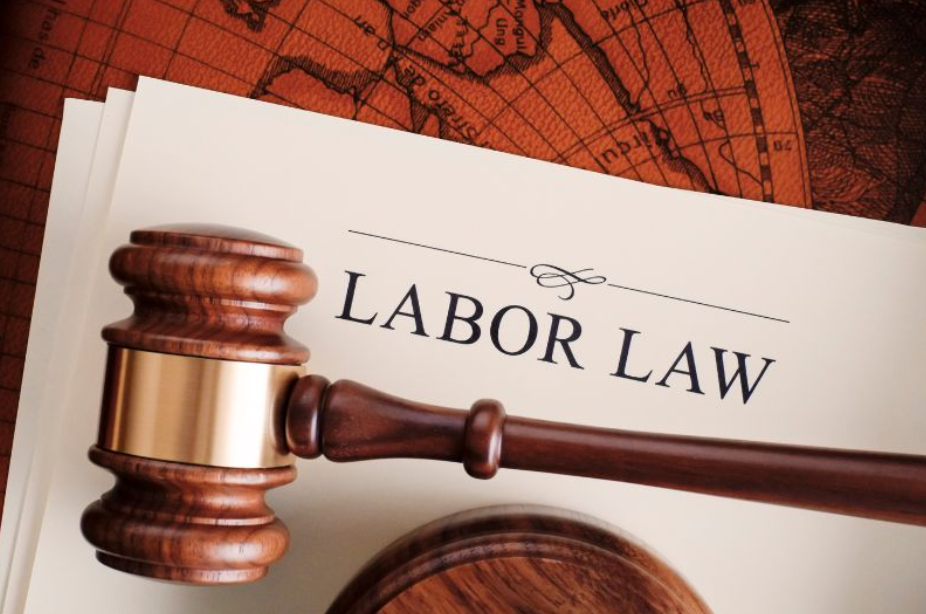California Leave Laws & Holidays: 2025 Update
The Golden State is known for leading worker protections and benefits in an attempt to attract the nation's brightest talent. Here BuddiesHR looks at what’s changed in 2025 regarding leave laws and holiday observances

The Golden State is known for leading worker protections and benefits in an attempt to attract the nation's brightest talent. Here BuddiesHR looks at what’s changed in 2025 regarding leave laws and holiday observances, and then summarizes the most important information about paid and unpaid leave.
Let’s begin with what’s new for California leave laws in 2025.

New California Leave Laws 2025
Most notably, California law changed regarding Paid Family Leave (PFL). Assembly Bill 2123 eliminated the need for eligible employees to take two weeks of accrued vacation leave before availing of PFL benefits. [1] This change gives workers the right to care for ill relatives without losing paid vacation benefits.
A further provision affecting PFL came into effect on January 1, 2025. Eligible workers receiving less than $63,000 annually will now receive up to 90% of their regular wages while on leave. This will come as a huge relief to employees who need time off to care for family responsibilities.
Assembly Bill 2499 also introduced extended paid sick leave for victims of certain crimes. This provision includes family members who have been affected by crime. [2] This change brings extended protections for workers to take care of their own recovery, as well as that of their family members, without fearing dismissal.
How is Leave in California Regulated?
Paid Time Off (PTO) is an umbrella term for leave that employees can use at their discretion, whether it’s vacation leave, illness, new additions to the family, or personal reasons. Unlike sick and family leave, which are often mandated by California law, additional vacation time is at the discretion of the employer. The Golden State is known for its employee-friendly leave laws, offering more protection than given by federal laws.
Employer obligations and responsibilities under California law
California employers who offer vacation benefits are obligated to adhere to federal and state laws, as well as their own company policies and procedures. Under the auspices of these regulations, certain leave is mandatory, such as paid sick leave, and employers may not withhold the stipulated benefits from any staff members. Employers must adhere to the following key laws that govern labor practices in California:
Employers are also obligated to communicate leave policies clearly and apply them consistently throughout the company. Alongside these obligations, employees must:
- Draw up written policies or a handbook and make it readily available to all employees.
- Accurately track and record accruals and leave balances.
- Pay out unused PTO upon separation of employment.
- Not retaliate against employees for taking paid or unpaid leave allowable by the federal or state law, as well as company policies.
🌴 Using Slack as your main communication platform? Then you should also track all vacation balances and accruals in the same place. With Palmy Vacation, you can make this happen. Don’t get caught up in paperwork - use a vacation tracker that supports your leave policies.
Vacation Pay and Benefits
The state of California does not make it a mandatory requirement for employers to provide vacation pay. However, if the employer does offer this benefit according to their company policies and regulations, then the law imposes restrictions on the employer, ensuring fair and equitable labour practices.
Since vacation time is designated by the employer, no minimum vacation leave days are set by the state of California. The employer may allocate 15, 20, or even 24 days leave per annum to attract and retain top talent, and manage their vacation pay responsibilities as they see fit, provided the company policies are transparent and consistently applied.
Unpaid vacation time
As far as unpaid vacation time is concerned, company policies will dictate the amount of unpaid leave an employee can take. Employees should also know that unpaid leave is not under any ‘job protection’ laws, and therefore, an employer has the right to terminate employment if it is deemed necessary to do so.
Accrual of vacation time
Under California employment statutes, paid vacation time is considered as wages, forming part of the employee’s compensation package, and vests as labor is performed. For this reason, accrued vacation time cannot be forfeited or taken away by the employer.
Think of it as putting paid time in the bank where it accrues until you withdraw it. If employment services are terminated, the company must pay employees for all unused vacation time with their final paycheck. Please note that employees covered by a collective bargaining agreement may have different leave benefits.
The use-it or lose-it rule
It is illegal for California employers to impose any such stipulation on paid vacation time. This rule is only observed by a few states, and California is one of them (the others are Colorado, Montana, and Nebraska). Similarly, an employer cannot deduct holiday pay during a pay period because the employee has accrued paid time. However, they are allowed to set a limit on the maximum number of days that can be accrued.

Sick Leave Benefits
Sick leave in California is mandated for eligible employees. Effective January 1, 2024, employees can expect 5 days or 40 hours of paid sick leave per year. This is an increase from the previous regulation, which provided a maximum of 24 hours of paid sick leave annually. All employees get sick leave, but they must have worked at least 30 days to avail of the benefit.
The Family and Medical Leave Act (FMLA) further extends this benefit up to 12 weeks, but employers are under no obligation to offer paid sick leave during this time. [3] This stipulation primarily serves new mothers who have had complications during childbirth, and employees who need unpaid sick leave for the purposes of recovering from a serious health condition, such as cancer.
Employees are eligible for this leave if they have worked for their employer for at least 12 months, or 1,250 hours over 12 months. All sick leave falls into a category called ‘job-protected leave’, which means you cannot be dismissed for taking sick leave, even if it’s extended to 12 weeks.
Accrual of sick leave benefits
Employers may offer sick leave benefits in one of two ways:
- Accrual method: In this method, employees earn roughly 1 hour of sick leave for every 30 hours worked.
- Up front policy: Employees are granted the full 5 days of paid sick leave at the beginning of the year.
Under the accrual method, employees may accrue up to 80 hours of paid sick leave, and the law allows employers to set a cap at 80 hours. However, paid sick leave usage is set at 40 paid hours of sick leave per annum. There is also no law that requires a payout of sick leave with the employee’s final paycheck upon termination of employment.
👉 Losing track of PTO allocations for your team? BuddiesHR provides an innovative and streamlined way to track vacation time with Palmy Vacation (a Slack first app). Palmy will do all the hard work of calculating leave allowances, accruals, and notify you when employees have unused vacation time.
Maternity and Paternity Leave Benefits
New parents in California benefit from an array of leave protections that together create one of the most generous family leave environments in the country.
The primary laws that govern maternity and paternity leave are as follows:
- California Family Rights Act (CFRA) - This Act provides up to 12 weeks of unpaid job-protected leave for the purpose of bonding with a new child. This child can be biological, adopted, or a foster child.
- Paid Family Leave (PFL) - This stipulation offers up to 8 weeks of partial wage replacement, funded by the state.
- Pregnancy Disability Leave (PDL) - Pregnant employees may receive up to 4 months of job-protected leave if they are disabled due to pregnancy, childbirth, or a related condition.
Most importantly, PDL and CFRA can be taken consecutively, which means potentially 5 months of protected paid leave. Employers may elect to offer paid maternity leave to attract talent, but this is not mandatory.
State Disability Insurance (SDI) or Paid Family Leave (PFL)
Both the SDI and PFL are state-administered programs and are funded through employee payroll deductions. Unfortunately, these programs do not offer job protection, but are rather a wage replacement scheme for workers to use in a medical crisis or long-term disability.
State Disability Insurance
This program offers short-term wage replacement, whereby up to 70% of wages can be replaced. For 2025, the maximum benefit amount is $1,620. Most employees are covered automatically through payroll deductions. This excludes public employees, freelancers, and independent contractors. Claims are filed through the EDD, and employees will need to provide certification to prove their reasons for filing the claim.
Paid Family Leave (PFL)
PFL offers up to 8 weeks of paid leave, and almost all employees who have paid into the SDI are eligible for this provision. It was specifically designed for the following reasons:
- Bonding with a newborn, adopted, or foster child.
- To provide care for an immediate family member who is seriously ill or injured (registered domestic partner, spouse, child, parent, parent-in-law, grandchild, grandparent, or sibling).
- Activities related to a close family member entering military service.
As previously mentioned, in 2025, new legislation has provided much-needed relief for workers earning less than $63,000 per annum, who may now receive up to 90% wage replacement under this scheme.
Bereavement Leave Benefits
Under AB1949, effective since January 1, 2023, California employees are entitled to up to 5 days of unpaid bereavement leave upon the death of a family member. This includes a spouse, parent, sibling, grandparent, grandchild, or domestic partner.
Notable stipulations of this benefit include:
- Leave must be taken within 3 months of the bereavement.
- The leave is unpaid, but employers can allow their employees to use accrued leave, such as paid vacation days.
- Applies to all employers with five or more staff members.
In the event of a bereavement, it is highly likely that employers will request documentation such as a death certificate or published obituary.
Other Leave Benefits
We’ve been dealing with the most important leave benefits and how they affect both the employer and the employee in California, but there are also lesser-known leave benefits that we will briefly discuss here.
California Holidays Leave Benefit
California offers 11 days off a year for all its residents, but employers are not under any obligation to provide paid vacation for California holidays. For this reason, employers may ask staff members to work on these days, and they do not have to pay one and a half times the usual wage.
Legal 2025 California holidays
The following are official holidays in the state of California for 2025:
- New Year’s Day - January 1
- Martin Luther King, Jr. - January 20
- Presidents’ Day - February 17
- Cesar Chavez Day - March 31
- Memorial Day - May 26
- Independence Day - July 4
- Labor Day - September 1
- Veterans Day, November 11
- Thanksgiving Day - November 27
- Day after Thanksgiving - November 28
- Christmas Day - December 5
Final Thoughts: California Leave Laws & Holidays
California leave law continues to evolve in an already job-protection-friendly environment. While employers have flexibility in offering paid vacation time, California law requires employers to adhere to federal and state laws that safeguard accrued leave.
Now is the time for HR teams to update leave policies and stay ahead of changes to legislation enacted in 2025. This not only avoids costly mistakes but facilitates good employer-employee relations. Palmy Vacation from BuddiesHR offers a smart way for HR and management to simplify PTO tracking in Slack. Test it out, and just see if you don’t love it! We dare you.

References:




